Drill pipes are an essential part of the oil drilling industry, and you need to ensure that they arrive safely at your worksite. Without your drill pipes, work stops, and your production comes to a halt. Companies that manufacture pipe products need to prioritize drill pipe safety during transportation to avoid any sort of damage.
Employees can take steps to ensure that pipes are delivered safely, such as quality assurance and practicing safe loading and unloading. Preparing and packaging your pipes properly maximizes shipping efforts to keep costs low on both ends of the production process. Keep reading to learn more about the five best practices for effective pipe transportation.
1. Packaging Systems
Simply placing pipes in a shipping container or a truck is not sufficient or efficient! Some manufacturing companies use patented systems to safely stack the most significant amount of pipes that can fit into shipping trucks. These often take the form of large frames that the pipes can slide into safely. Your pipes should fit snuggly in their packing system to eliminate any shifting during transportation. The best pipe transportation products will be easy to use and eliminate all metal-on-metal contact, which is integral for keeping pipes in good condition during transport.
2. High-Density Stacking
Transporting a significant amount of drilling pipes at once is the best way to maximize shipping methods. This method is why you should use high-density stacking methods for pipe transportation. You achieve this by combining packaging systems with other pipe end protector products. Any friction across multiple pipes will damage them, resulting in loss of time, product, energy, and money. So, while maximizing the space in a shipping container is essential, it’s also vital to do this safely.
With 565 million barrels of oil extracted manually in the U.S. through offshore drilling, pipes need to be transported safely and on time. Oil demand is rising again after the dip caused by COVID-19 and the situation in Ukraine. As oil demand increases, so does the need for effective drilling pipes. If drilling is only a tiny part of your company, there are equipment rental options with MSI Pipe Protection Technologies for the Rhino Tubular System. Our rental program is an excellent option for those who need to transport pipes safely for a limited timeframe or for one-time use.
Survey/Poll Question
3. Quality Assurance Practices
Packaging systems are game-changing, but not all are created equal. You and your transportation crew will want to ensure that the pipe storage and transportation systems are made to the highest quality standards, otherwise, all the effort to protect pipes during shipping could go to waste. Our quality starts back in the factory and is vital throughout pipe product delivery. Talk to your manufacturer about their quality assurance practices and make sure they are applied to all products. Ask about their certifications before moving forward with any contracts.
Be sure to check on the quality assurance practices when you choose a manufacturer for pipe transportation products. At MSI Pipe Protection Technologies, we adhere to ISO 900 standards during manufacturing. Since 1997 MSI has held certifications for ISO 9001, ISO 14001, and ISO 45001. This rigorous certification process ensures all our products are of the highest quality. We are committed to creating better products for all pipe storage, pipe lifting, and pipe transportation needs.
4. Pipe Loading and Unloading Practices
Drill pipes aren’t only in danger of being damaged while on a truck or ship. Pipe damage can occur during loading and unloading by employees. Your employees can get seriously injured while transporting heavy pipes incorrectly. Here are some of the items that should be considered during the loading and unloading of drill pipes:
- Weight of the load lifted
- Range of the lift
- Size and shape of the pipe
- Number and frequency of lifts
The manager or superintendent on the job should enforce guidelines for safe practices. Employees handling the pipes should also be thoroughly trained from the very beginning to handle pipes. Operators need to identify the maximum allowances for weight, number of lifts, range of the lifts, and the size of the pipe. Without guidelines for safety practices, there’s a greater risk of injury on the job site. Injuries not only put workers out of commission but can also disrupt the workflow. Proper safety practices keep employees and products safe.
5. Extra Packaging Safety Measures
Along with high-density stacking and packaging systems, you can use a few other products for efficient pipe transportation. Pipe chocks are a great way to secure the bottom layer of pipes on the bed of a truck. Pipe chocks are triangular rubber devices that can be nailed down to the wood. Secure your pipes during transport with our resin molded pipe chocks. They are also easy to dismantle when you need to move locations or sites.

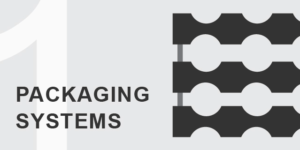
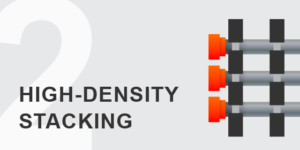

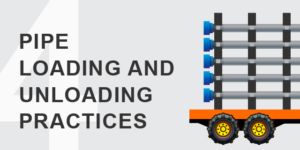
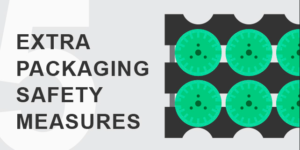
Why Choose MSI Pipe Protection Technologies?
Thanks to our processes and products, your pipes are guaranteed to ship safely and securely and arrive at their destination without damage. Our Rhino Tubular Handling System, pipe chocks, and bumper rings are all manufactured according to ISO 9001 standards. These products in particular are easy to use and uninstall for future use. Our products are durable and reusable. Take a look at more products on our website to learn how we keep pipes safe during transportation.
Reach Out to Us Today
Are you in need of pipe transportation products? Reach out to us at MSI Pipe Protection Technologies to talk to a representative. Our team members can provide you with more information about our quality assurance processes, and help you make the right choice for your drill pipe protection needs.

